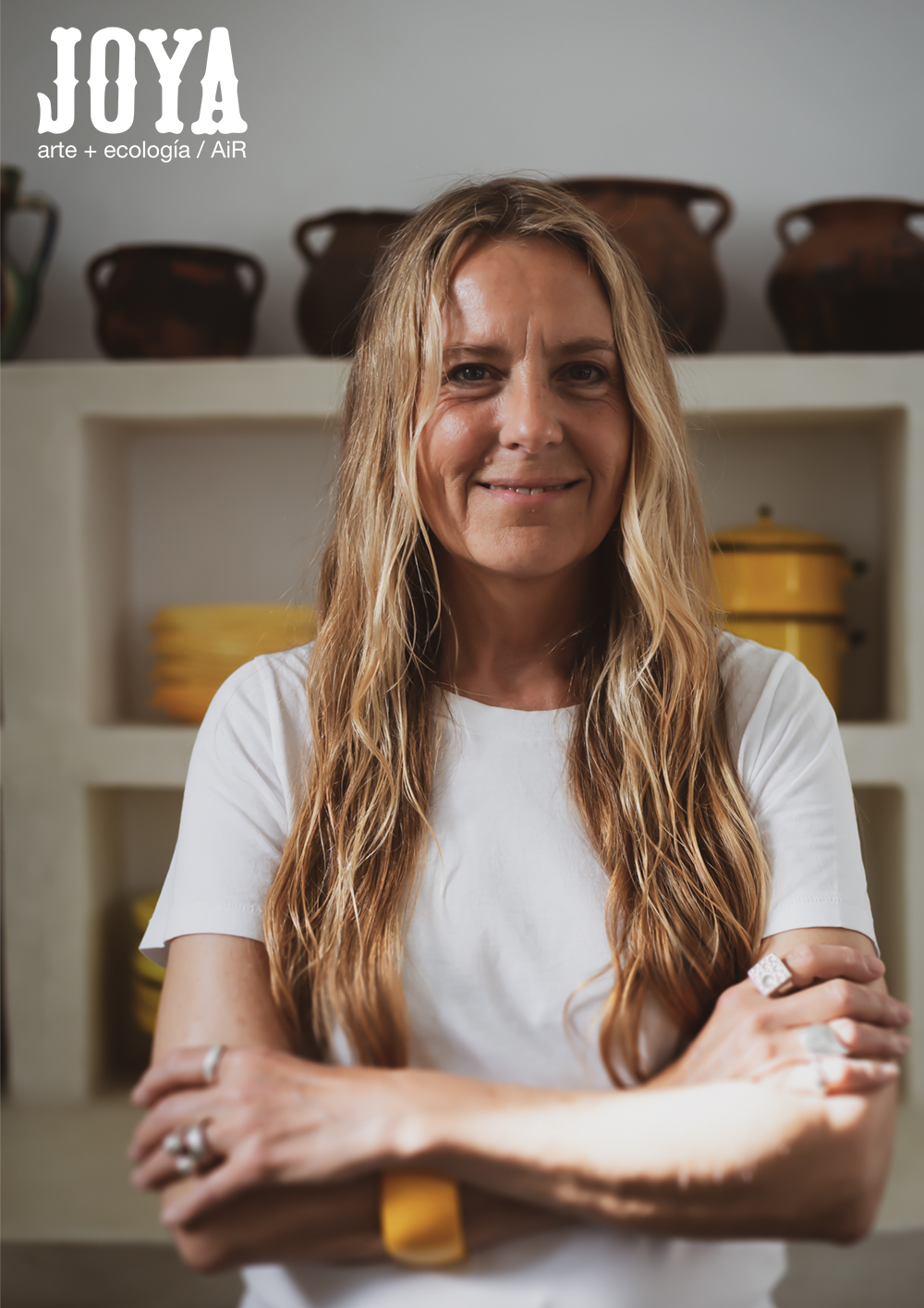“I climbed up a mountain today and came back down altered, thinking like a mountain…” notebook excerpt day 8, Joya:AiR residency
“I am a lens based artist exploring earth matters, the push pull of the human/nature dialogue, and our Western lost sense of relationship and reciprocity with the animate natural world.
It is an embodied practice that is in conversation with sensuous encountering from the space in between – walking with my camera and feeling my way into the non-human world around us, in touch with our nested relationship with the planet, and its with us. As such, I felt that Los Gázquez, the home of Joya: AiR, would be an incredible opportunity, and I was not disappointed. From my arrival to the morning I left 10 days later, when the mountains were cloaked in smoky low cloud laying thick dew over the parched landscape, I was enthralled. Simon and Donna welcome artists into their beautifully restored cortijada and together they nurture a collective spirit of exploration, creative endeavour and community stimuli.
The house is a cool, white flowing space beautifully crafted and decorated where you can find stillness and quiet to work or rest; and then in the evenings a real sense of community emerges with the other residents; I had so many fascinating and stimulating conversations before, during and after the always excellent dinners. Simon and Donna have created a place that just holds and nurtures you, with a strong sense of community that also enables you to make work without distraction; it is a rare combination.
Each day I would wake up excited by the potential of making. The off-grid remoteness of Los Gázquez instills a sense of peace and calm, enabling you to be within the quiet space of the present untempered by memory and desire. Working at a primal level, I was drawn immediately to the hot, bone white limestone space of the barranco below the cortijada, a fluvial gorge, deep cut, snaking its dry way down the valley, redolent of a huge boiling, rushing and tumbling and roaring mass of water that carries with it rocks boulders, sediment, fossils, tree roots, carving and scratching and gouging out new paths and gullies as it forces its way through the landscape. Now it is almost completely dry and still, save for a few pools higher up that were harbouring strings of black pearls, the beautiful expression of toad spawn. There is a spell that the place casts, and I feel it still, strange beauty and total peace save for the wind in the pines that pepper the landscape above, and birdsong, burning white hot powdered limestone, baked, cracked, moulded, so primal, like the primordial soup we humans climbed out of eons back. Embracing the immediate, unexplored ecologies of the present, untempered by the disconnecting force of language, I was able to work in the utterness of solitude in the thickness of the present in the hot white space of the barranco. I encountered a landscape that returned the strength of my gaze, that I struggled with at times, and where the magic spell of love, of falling, entered my veins enabling me to go deeper and deeper into connecting.
I do not know yet whether the mass of work I made whilst I was there will translate into a body of work that resonates with others, but I feel, sense that it might. I always need time, lived time to give me distance from any making experience. I can then begin to tease out the various side tributaries that I followed and dig into the core of the work. Whatever the outcome, I know that my experience at Los Gázquez has altered me slightly at tectonic level, like the barranco after a fresh deluge, my banks and bedrock have been shifted…and for that I am very grateful. Thank you Simon and Donna, my fellow artists Sissel, Andrew, Milla and Suzana; and of course Frida the giant schnauzer”.
Gin Rimmington Jones
http://ginrimmingtonjones.com/
Gin Rimmington Jones, is a photographic artist based in Brighton, UK
2016-2018 MA in Photography at the University of Brighton








































